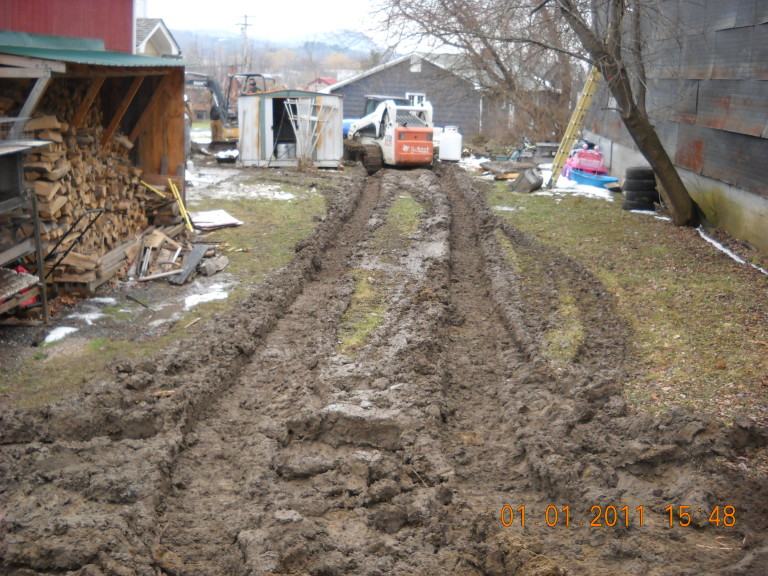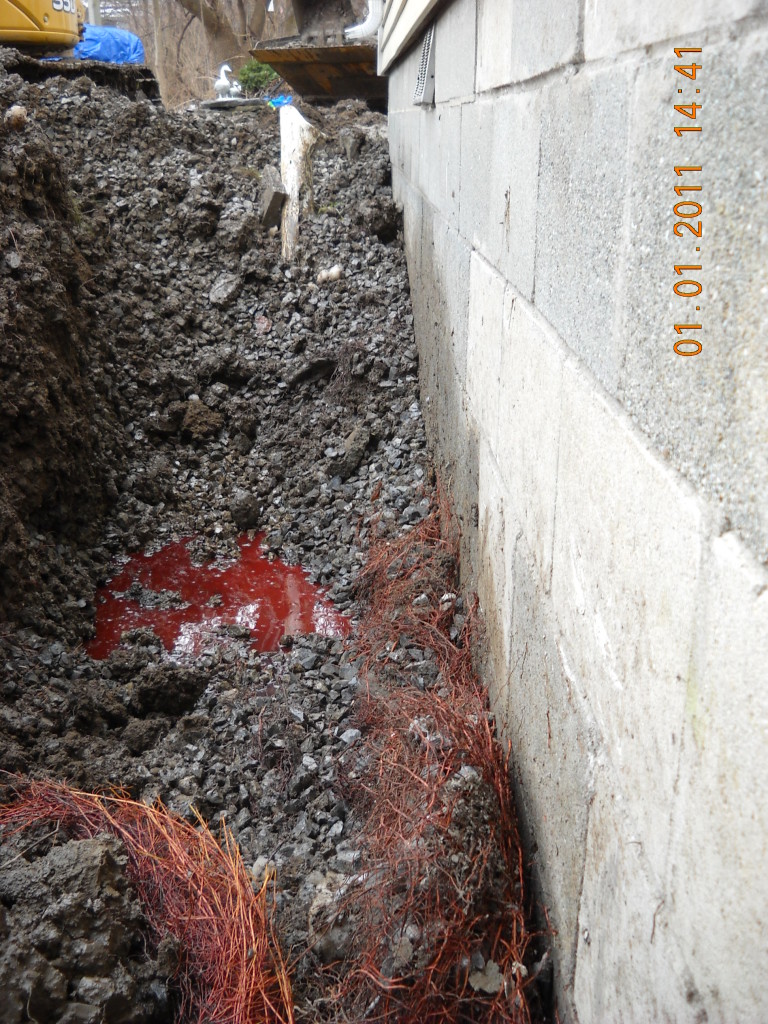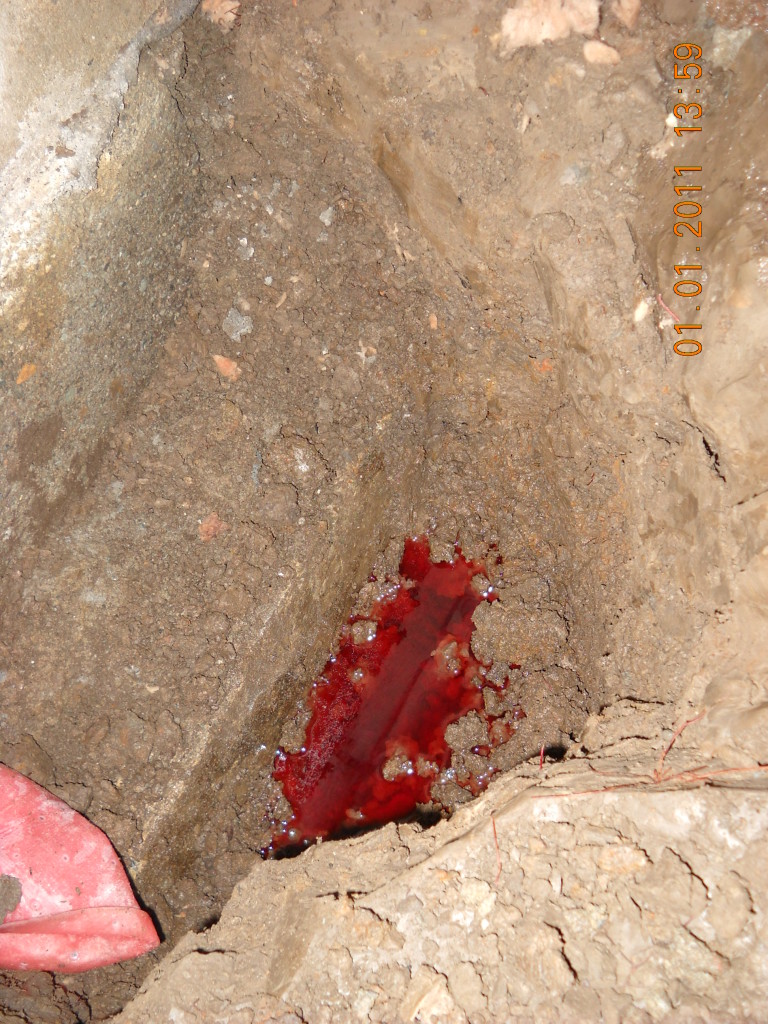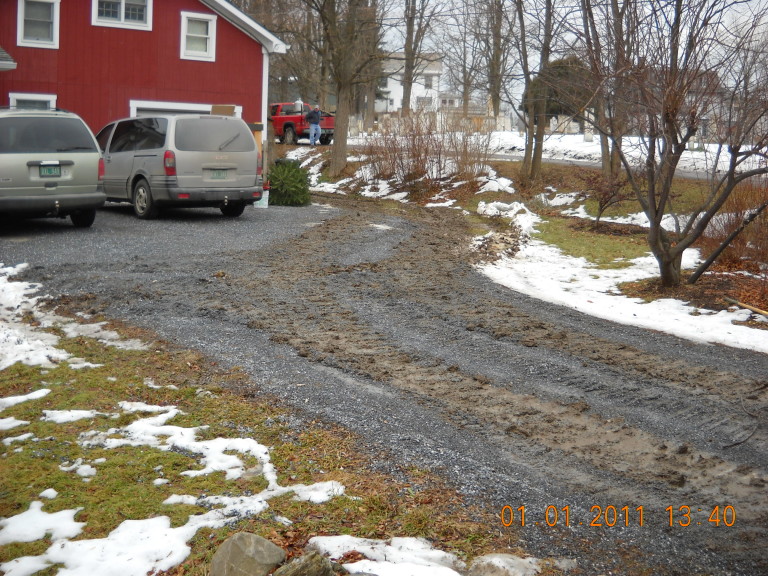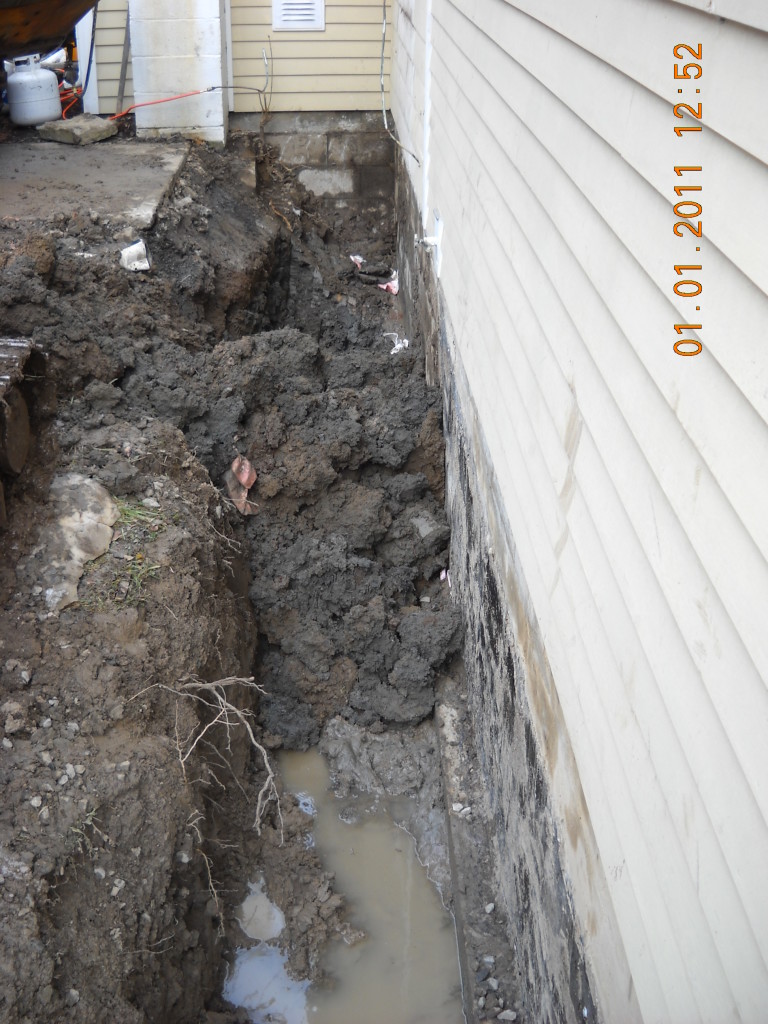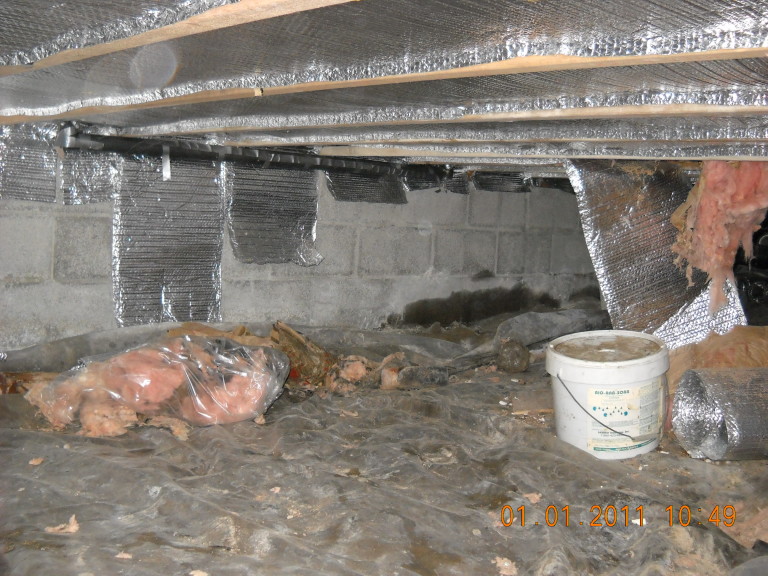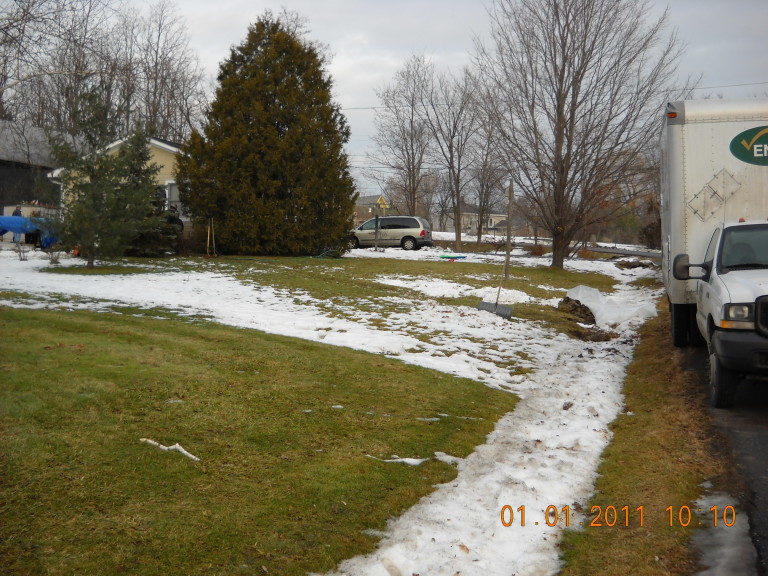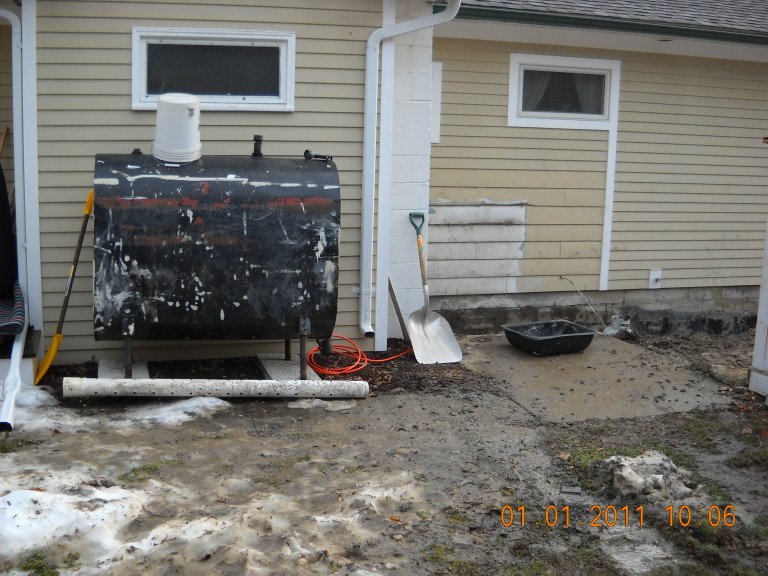REI was notified and responded to a #2 home heating oil release that occurred as a result of a service call to the heating system. Personnel responded and observed oil leaking from the housing of the oil filter associated with the 275-gallon fuel oil above ground storage tank (AST). Both the filter housing and the AST were located outside the residence.
Remediation personnel excavated fuel oil impacted soils and stone surrounding a 4-inch diameter perforated foundation drainage pipe located near the location of the AST. The fuel oil migrated along the drainage pipe to the outfall location at the roadway, a distance of approximately 112 feet. The final excavation was approximately 2 to 3 ft. wide with a maximum depth of approximately 3 ft. During soil excavation along the foundation’s footings, personnel observed areas where water and small amounts of fuel oil seeped out from below the footings. When encountered, the oil was recovered using absorbent material or under vacuum using a wet/dry vacuum. Although these observations suggested that some oil-impacted soil existed below the foundation footing, this soil could not be disturbed without threatening the structural integrity of the foundation. Soil samples collected and analyzed revealed remediation efforts were successful.
Interior monitoring wells were installed in the basement to monitor subsurface conditions. These interior monitoring/ recovery wells were inspected, at a minimum, on a weekly basis and later on a monthly basis. Sorbent material was maintained within the wells and during site inspections the degree of staining or oil-saturation was noted and saturated sorbents were replaced as needed. VT DEC stated that the remedial objectives for the site should be the absence of indoor air impact, the absence of recoverable free phase product, and the absence of free-phase product migrating off-site.
Continued monitoring and the use of absorbents were successful in removing free product from the subsurface water table. Remedial activities subsequently removed oil odors from the residence. At the completion of remedial activities, site conditions were restored to pre-spill conditions including restoration of the lawn. The remedial efforts were documented. They were shown that the remedial objectives set by the VT DEC were achieved and, therefore, that no additional actions are warranted. Regulatory closure for the spill was granted.

